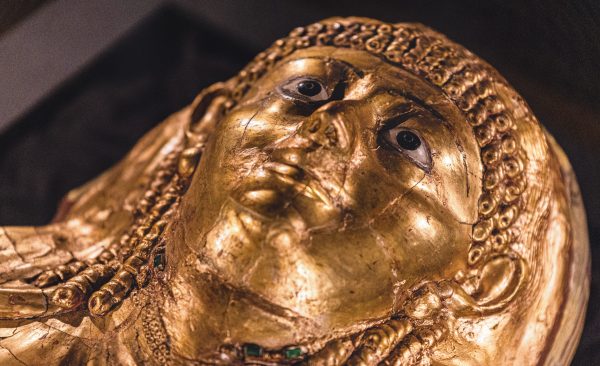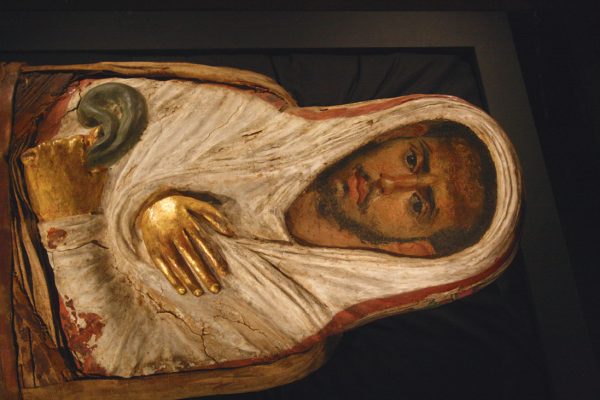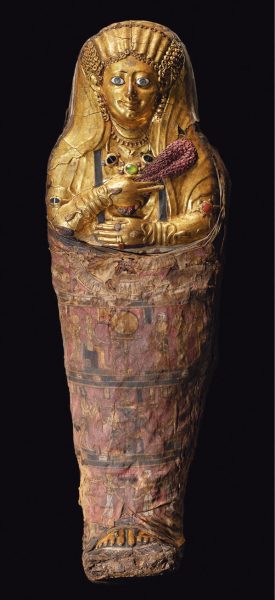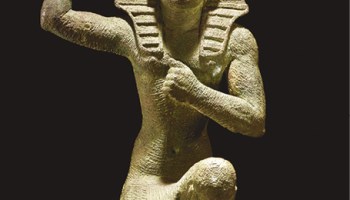Manchester Museum, part of the University of Manchester, stands as a treasure trove of ancient Egyptian artifacts, prominently featuring elements amassed during William Matthew Flinders Petrie’s excavations at Hawara in the Fayum region of Egypt during the 1880s and in 1911.

The latest exhibition to grace Manchester Museum’s halls, the “Golden Mummies of Egypt,” showcases a spectacular assortment of 107 objects and 8 mummified individuals from the museum’s distinguished collections.
Highlighted within the exhibition are artefacts predominantly hailing from the Graeco-Roman period (300 BC-AD 300), a time when Egypt experienced the rule of the Ptolemies and later a succession of Roman emperors.

Although often overshadowed by the allure of Pharaonic Egypt, the Graeco-Roman era emerges as a captivating period in Egyptian history, showcasing the richness of multiculturalism evident not only in everyday life but also in the beliefs and customs surrounding death.
While mummification is commonly perceived as a method to preserve the body of the deceased, Dr. Campbell Price, the exhibition’s curator, posits a different perspective. According to Price, mummification was more about deification than mere preservation ritualistic’s process aimed at transforming the deceased into a god-like being, thereby facilitating their journey to immortality alongside the gods.

In the Graeco-Roman era, this practice was embraced by various foreign settlers in Egypt, offering an optimistic outlook on the afterlife, distinct from the Classical views on death.
Moreover, the external appearance of mummies played a crucial role in the deification process. The transition from wooden coffins to elaborate cartonnage masks and gilded coverings added a divine touch, aligning with the belief that gods possessed golden flesh and hair of lapis lazuli.

These adornments not only symbolized wealth but also symbolically transformed the deceased into an idealized entity, a reflection of their rebirth in the afterlife.
The exhibition also showcases the captivating “Fayum portraits,” intricate paintings on thin wooden panels affixed to mummies to depict the deceased. These lifelike portraits, originating in ancient Italy, offer a vivid glimpse into the individuals they represent, albeit often portraying an idealized version for their journey into the afterlife.

As visitors explore the cultural marvels of Graeco-Roman Egypt through the “Golden Mummies of Egypt” exhibition, they are invited to reassess their perceptions of ancient Egyptian traditions surrounding life and death.
By delving into a lesser-explored facet of Egypt’s history, this exhibition presents a unique opportunity to gain fresh insights into a captivating era that continues to intrigue and inspire.





